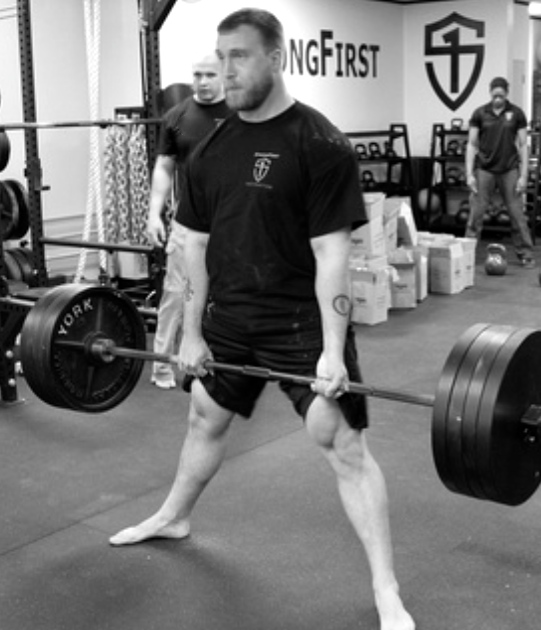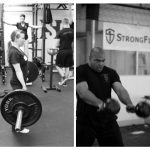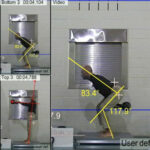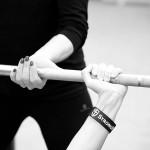So, I want to deadlift. I want a strong deadlift. I want a really strong deadlift.
Oh, you too? I don’t need to inform you of the benefits of adding barbell work into your programming. Whether it’s the front squat, deadlift, bench press, military press, or other great staples in a barbell diet, you’re probably aware of their effect on your overall strength development. I would explain, but that’s not what this article is about.
I want to give some suggestions on how to stay healthy while gaining strength in your barbell lifts.

Kettlebell Lifts as Correctives
I’ll start by reminding you of the inherent “corrective” aspect of the single kettlebell lifts. From here forward, I will simply refer to this “corrective” aspect as balance or balancing.
Single kettlebell exercises will make you strong. They will also make you durable. They do this by balancing the left and right sides of the body in strength, mobility and coordination, to say the least. If you believe what Gray Cook tells us with his Functional Movement Screen (I do), then you understand that balanced strength and mobility makes us more resilient to injuries. It is easy to forget this awesome benefit of the kettlebell when we get eager to set a PR in one of the barbell lifts.
As barbells start to take up more and more of your strength practice, you may realize that they don’t always promote balance left to right. Let us hope this realization doesn’t come from actualization of an injury. A barbell lends itself to heavier poundage and thus more strength gains. It may not, though, give your core everything it needs to stay healthy.
Below, I suggest a few exercises that can act as accessories to your powerlifts. Accessory exercises help build muscle, stop strength leaks, and add training volume without undesired stress to the nervous system. The particular exercises I’ve suggested promote balance among the left and right sides of the body.
The Lesson of the Wooden Dowel
Cook also tells us that the core should be trained in a symmetrical, split, and single-leg stance. Think deadlift, lunge, and single-leg deadlift. A few days after learning this, I decided to test myself. My findings were alarming! I could barely perform a single-leg deadlift (hip hinge) on my right leg. This was with zero weight. A wooden dowel told me the truth about my deadlift. At the time, I was pulling 2.5-times bodyweight. I was asking for an injury.
After a few weeks and a lot of tedious work, I balanced my hip hinge right to left in both strength and movement quality. I dodged that bullet. Subsequently, my competition deadlift became easier. My max went up in the following weeks; thus, breaking a plateau.
The more balanced you are, the more resilient you become. The more resilient you become, the more you can train. The more you can train, the stronger you grow.

How I Got Bigger Deadlifts – and Stayed Healthy
After re-reading some of Pavel’s literature and studying the FMS more deeply, I experimented with several different exercises. Here is what I have found to help myself and my students stay healthier and grow stronger:
- Suitcase Deadlift
- Single-Leg Deadlift (1 and 2 kettlebells)
- Barbell and Kettlebell Racked Lunges
- Turkish Get-Up
- Farmer’s and Bottoms-Up Carries (both with one kettlebell)
- Single Kettlebell Bench Press
These exercises give you a chance to assess your tension techniques one side at a time. They allow you to find strength leaks more easily. They promote balance of your strength, mobility, stability, and coordination. They make you stronger.
Now, don’t get carried away and try to set a record for the heaviest suitcase deadlift or replace all your squats with lunges. After all, these exercises and other variety exercises are simply grease for the bigger machine. Treat them as dessert or appetizer, but not as your main meal.
How you program them is up to you, and I would be creative. I make it a point to always warm up for a heavy deadlift session with a couple sets of single-leg deadlifts. Perhaps, use the kettlebell bench as one of your bench training days. What I have recently done is to group a few of the exercises together and call it a session.
Yet another option would be to finish your practice with one of these lifts. If you’re a sumo lifter, try finishing your session with barbell lunges for a few sets. Your glutes will thank you (after they stop hating you). If you’re a more intuitive student, you can practice them freely until you feel balanced and maintain from there.
I’ve included sample program ideas from times past. I’ve included the weights for my balancing exercises simply to give an example of how easy these exercises can be.
A week from my book:
Day 1:
- 2KB S.L.D.L – 3x3reps each leg – 20kg to 32kg – Under 20% of DL MAX
- Sumo DL – 5X5
- Weighted Chins – 3×5
- Barbell Lunge – 3×8 each leg – 95 to 135lbs – Under 25% of Squat MAX
- Single KB swings or snatches – 80-120 reps total
- Farmer’s Carry – 100yards each arm – 40kg
Day 2:
- Bench – 3,3,3,5,5,5
- Bent Row – 3 to 5 x 5reps
- TGU – Weight ladder – 1 rep each to top weight
- B.U. Carry – 50 yards total each hand – 24 to 32kg depending on feel
Day 3:
- Back Squat – 5,3,2 – 5,5,5
- Suitcase DL – 5×2 each – 135 to 205lbs – Under 30% of DL MAX
Day 4:
- Barbell Push Press – 3 to 5 x 3reps
- KB bench press – 5 x 8-10
- Weighted Pull-ups – 3 x 5
- Plank Variations
A week from a student’s book:
Day 1:
- S.L.D.L – 3×5 – Light to medium weights
- Deadlift – work up to top set of 3-5
- Weighted Pull-ups – 5×5
Day 2:
- Top of the minute for 5-8 rounds:
- Bench – 5@50-75%
- Barbell Front Squat – 3@ 40-75%
- Snatch – 6 each arm
- TGU Sit-up – 2 each – 20-36kg
- BU Carry – 20yds each hand
Day 3:
- Deadlift – work up to 75% of top set from #1 session
- Suitcase DL – 3×3 – Light to medium weights
- Plank Variations
Day 4:
- Top of minute for 5-8 rounds:
- KB bench – 5 each
- 2KB Racked Lunge – 5 each leg
- 2H Swing – 10
- Farmer’s Carry – 20yds each hand
- Toe Thrust – 30sec
I think where balancing exercises get a bad name is when they are used as a lift and not an exercise. In other words, when you major in minors, you don’t get very strong.
The approach I use is to concentrate on these exercises when needed. Then, when you have achieved balance, maintain them as warm-ups, back-offs, or on a variety day. If you are unfamiliar with these exercises, Gray Cook, Brett Jones, Pavel, and Dan John have all written about them. Read some literature, dial in your technique, and be STRONG!




